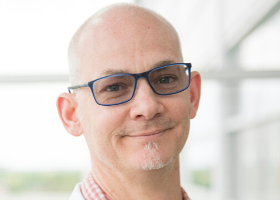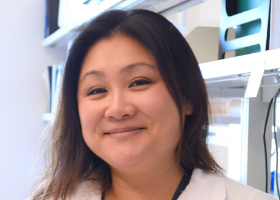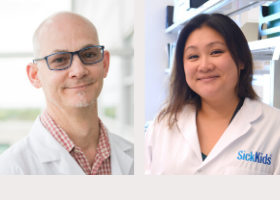Using 3D technology to understanding how lung cells respond to COVID-19

William Stanford, PhD, Ottawa Hospital Research Institute

Amy Wong, PhD, The Hospital for Sick Children
Why do patients with COVID-19 present with varying degrees of infection and disease severity? The answer may lie in the genetic changes that take place within cells, when infected with the SARS-CoV-2 virus. With support from the Stem Cell Network a team led by Drs. William Stanford (Senior Scientist at the Ottawa Hospital Research Institute) and Amy Wong (Scientist at the Hospital for Sick Kids) are collaborating to better understand the genetic changes that take place.
Using stem cells, Drs. Stanford and Wong are creating 3D human lung tissues to investigate how three main cell types in the lung respond to SARS-CoV-2 viral infection. These include:
- epithelial cells, the primary cells lining the airways;
- vascular cells, cells lining the blood vessels; and
- immune cells, surveillance cells that attacks respiratory pathogens.
Putting these cell types together is key to fully understanding how they interact and contribute to severe lung injury caused by COVID-19. This research is creating advanced lab models that can demonstrate how the virus impacts lung tissue, this is very important as such models are currently limited. In the coming months it is expected that the team will be able to use their 3D human lung tissue models to test Health Canada & FDA approved drugs to identify novel therapeutics to reduce COVID-19 disease severity.
Through SCN’s COVID-19 Rapid Response Research Initiative the Stanford-Wong team were awarded over $195K to conduct this innovative and important research. This funding has been matched by other funding partners with in-kind and cash contributions of $397K.
To learn more about Stem Cells in the Fight Against COVID-19 click here.

